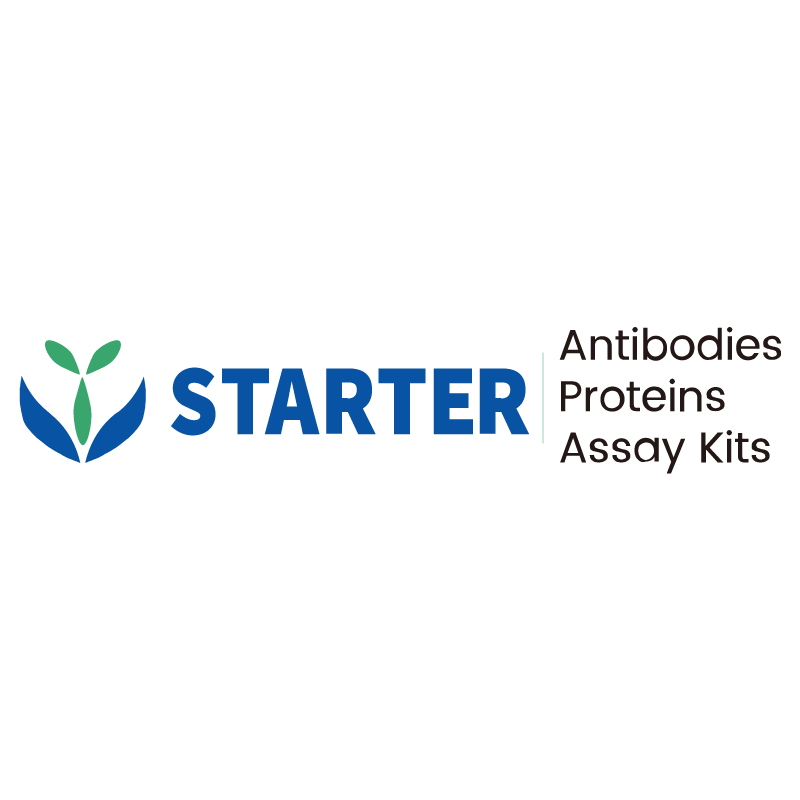WB result of Citrate synthetase Recombinant Rabbit mAb
Primary antibody: Citrate synthetase Recombinant Rabbit mAb at 1/1000 dilution
Lane 1: HeLa whole cell lysate 20 µg
Lane 2: HepG2 whole cell lysate 20 µg
Lane 3: 293T whole cell lysate 20 µg
Lane 4: A431 whole cell lysate 20 µg
Lane 5: SW620 whole cell lysate 20 µg
Lane 6: LNCaP whole cell lysate 20 µg
Lane 7: Caco-2 whole cell lysate 20 µg
Secondary antibody: Goat Anti-Rabbit IgG, (H+L), HRP conjugated at 1/10000 dilution Predicted MW: 52 kDa
Observed MW: 43 kDa
This blot was developed with high sensitivity substrate
Product Details
Product Details
Product Specification
| Host | Rabbit |
| Antigen | Citrate synthetase |
| Synonyms | Citrate synthase, mitochondrial; Citrate (Si)-synthase; CS |
| Immunogen | Synthetic Peptide |
| Location | Mitochondrion |
| Accession | O75390 |
| Clone Number | S-1708-56 |
| Antibody Type | Recombinant mAb |
| Isotype | IgG |
| Application | WB, IHC-P, ICC, ICFCM |
| Reactivity | Hu |
| Positive Sample | HeLa, HepG2, 293T, A431, SW620, LNCaP, Caco-2 |
| Predicted Reactivity | CyMk, Xe, Zf, Bv, Pg, Ck |
| Purification | Protein A |
| Concentration | 0.5 mg/ml |
| Conjugation | Unconjugated |
| Physical Appearance | Liquid |
| Storage Buffer | PBS, 40% Glycerol, 0.05% BSA, 0.03% Proclin 300 |
| Stability & Storage | 12 months from date of receipt / reconstitution, -20 °C as supplied |
Dilution
| application | dilution | species |
| WB | 1:1000 | Hu |
| IHC-P | 1:200 | Hu |
| ICC | 1:500 | Hu |
| ICFCM | 1:50 | Hu |
Background
Citrate synthetase, also known as citrate (Si)-synthase, is an enzyme that plays a crucial role in the first step of the tricarboxylic acid (TCA) cycle, also known as the citric acid cycle or Krebs cycle. This enzyme catalyzes the condensation of acetyl-CoA with oxaloacetate (OAA) to form citrate, which is a key reaction in the metabolic pathway that generates energy through the oxidation of acetate groups derived from the breakdown of food molecules. The activity of citrate synthetase is important not only for the energy production through the TCA cycle but also because citrate provides a carbon source for the de novo synthesis of fatty acids and membrane lipids. Abnormal expression or mutation of citrate synthetase has been linked to various types of cancer, suggesting an oncogenic role for the enzyme. Additionally, citrate synthetase has been studied for its potential as a therapeutic target in conditions such as cancer and neurodegenerative diseases due to its involvement in mitochondrial function and energy metabolism.
Picture
Picture
Western Blot
FC
Flow cytometric analysis of 4% PFA fixed 90% methanol permeabilized HeLa (Human cervix adenocarcinoma epithelial cell) labelling Citrate synthetase antibody at 1/50 dilution (1 μg)/ (Red) compared with a Rabbit monoclonal IgG (Black) isotype control and an unlabelled control (cells without incubation with primary antibody and secondary antibody) (Blue). Goat Anti - Rabbit IgG Alexa Fluor® 488 was used as the secondary antibody.
Immunohistochemistry
IHC shows positive staining in paraffin-embedded human colon. Anti-Citrate synthetase antibody was used at 1/200 dilution, followed by a HRP Polymer for Mouse & Rabbit IgG (ready to use). Counterstained with hematoxylin. Heat mediated antigen retrieval with Tris/EDTA buffer pH9.0 was performed before commencing with IHC staining protocol.
IHC shows positive staining in paraffin-embedded human kidney. Anti-Citrate synthetase antibody was used at 1/200 dilution, followed by a HRP Polymer for Mouse & Rabbit IgG (ready to use). Counterstained with hematoxylin. Heat mediated antigen retrieval with Tris/EDTA buffer pH9.0 was performed before commencing with IHC staining protocol.
IHC shows positive staining in paraffin-embedded human liver. Anti-Citrate synthetase antibody was used at 1/200 dilution, followed by a HRP Polymer for Mouse & Rabbit IgG (ready to use). Counterstained with hematoxylin. Heat mediated antigen retrieval with Tris/EDTA buffer pH9.0 was performed before commencing with IHC staining protocol.
IHC shows positive staining in paraffin-embedded human colon cancer. Anti-Citrate synthetase antibody was used at 1/200 dilution, followed by a HRP Polymer for Mouse & Rabbit IgG (ready to use). Counterstained with hematoxylin. Heat mediated antigen retrieval with Tris/EDTA buffer pH9.0 was performed before commencing with IHC staining protocol.
IHC shows positive staining in paraffin-embedded human hepatocellular carcinoma. Anti-Citrate synthetase antibody was used at 1/200 dilution, followed by a HRP Polymer for Mouse & Rabbit IgG (ready to use). Counterstained with hematoxylin. Heat mediated antigen retrieval with Tris/EDTA buffer pH9.0 was performed before commencing with IHC staining protocol.
Immunocytochemistry
ICC shows positive staining in HepG2 cells. Anti-Citrate synthetase antibody was used at 1/500 dilution (Green) and incubated overnight at 4°C. Goat polyclonal Antibody to Rabbit IgG - H&L (Alexa Fluor® 488) was used as secondary antibody at 1/1000 dilution. The cells were fixed with 4% PFA and permeabilized with 0.1% PBS-Triton X-100. Nuclei were counterstained with DAPI (Blue). Counterstain with tubulin (Red).


